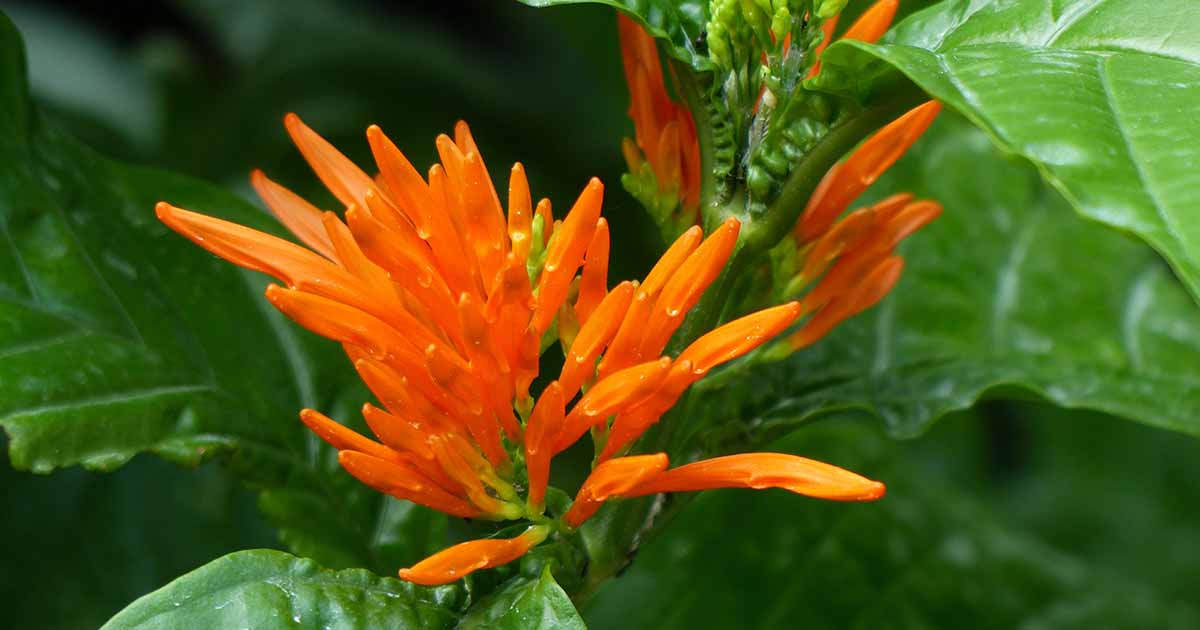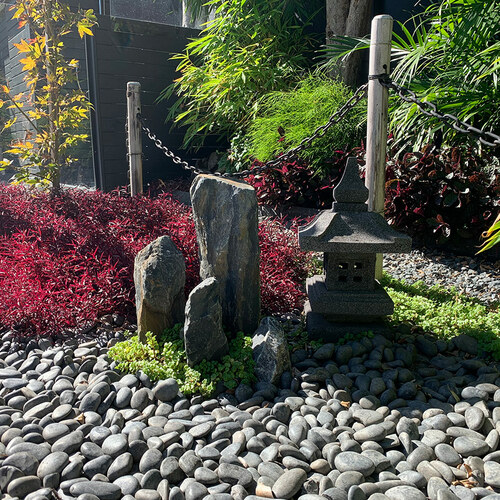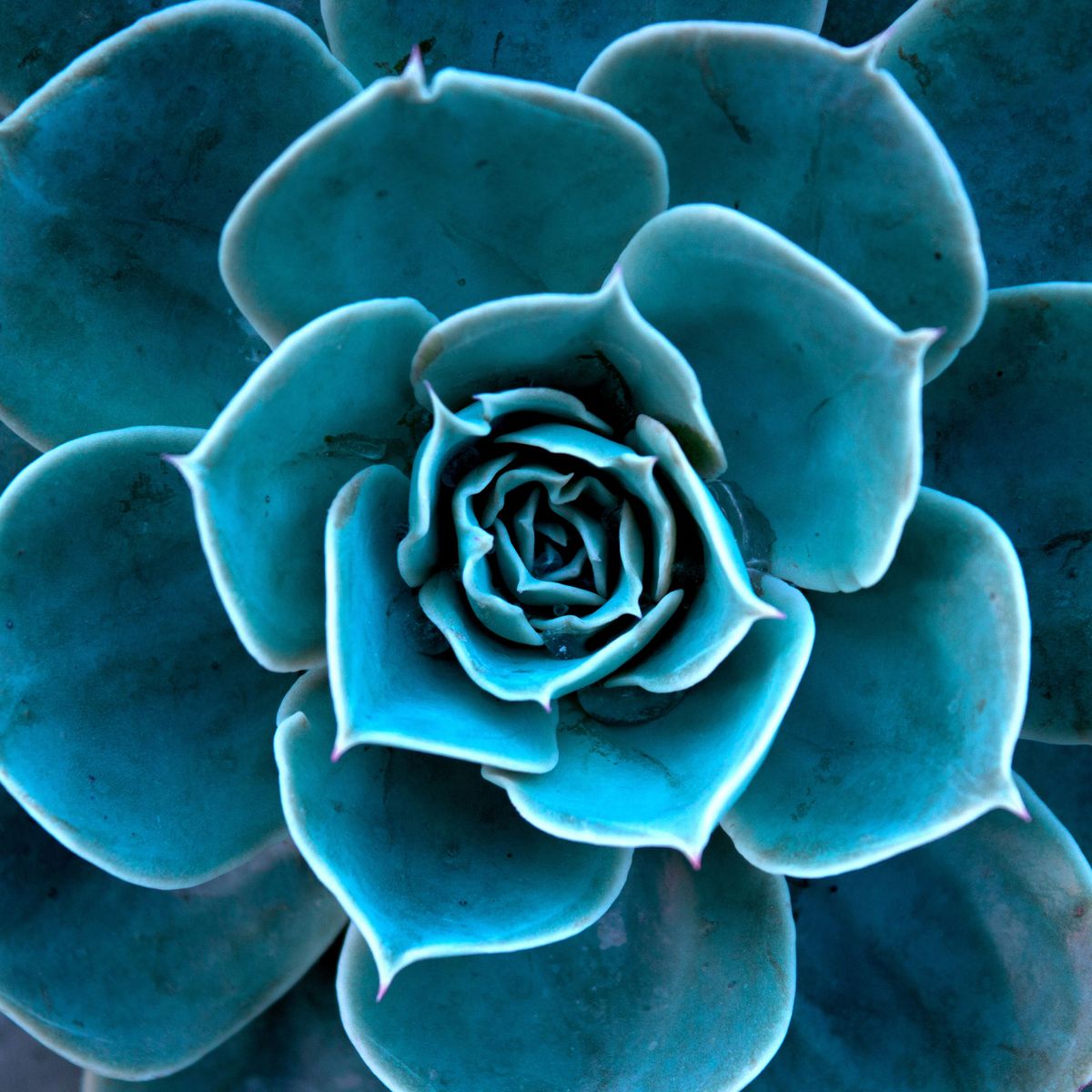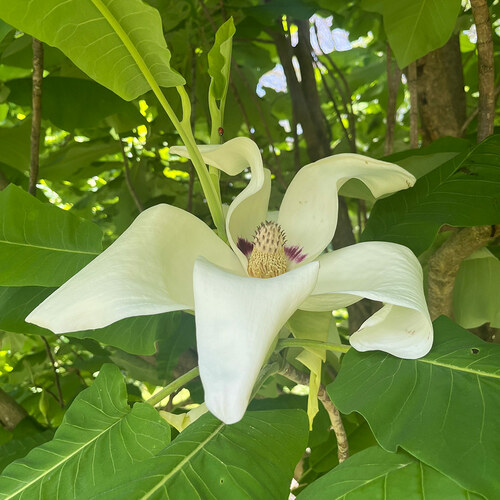Justicia spicigera
I first learned about Mexican honeysuckle through traditional Mexican herbalism practices.
The shrub, commonly known as muicle in my community, is native to the region where my relatives come from, so I felt an instant connection to this medicinal herb.
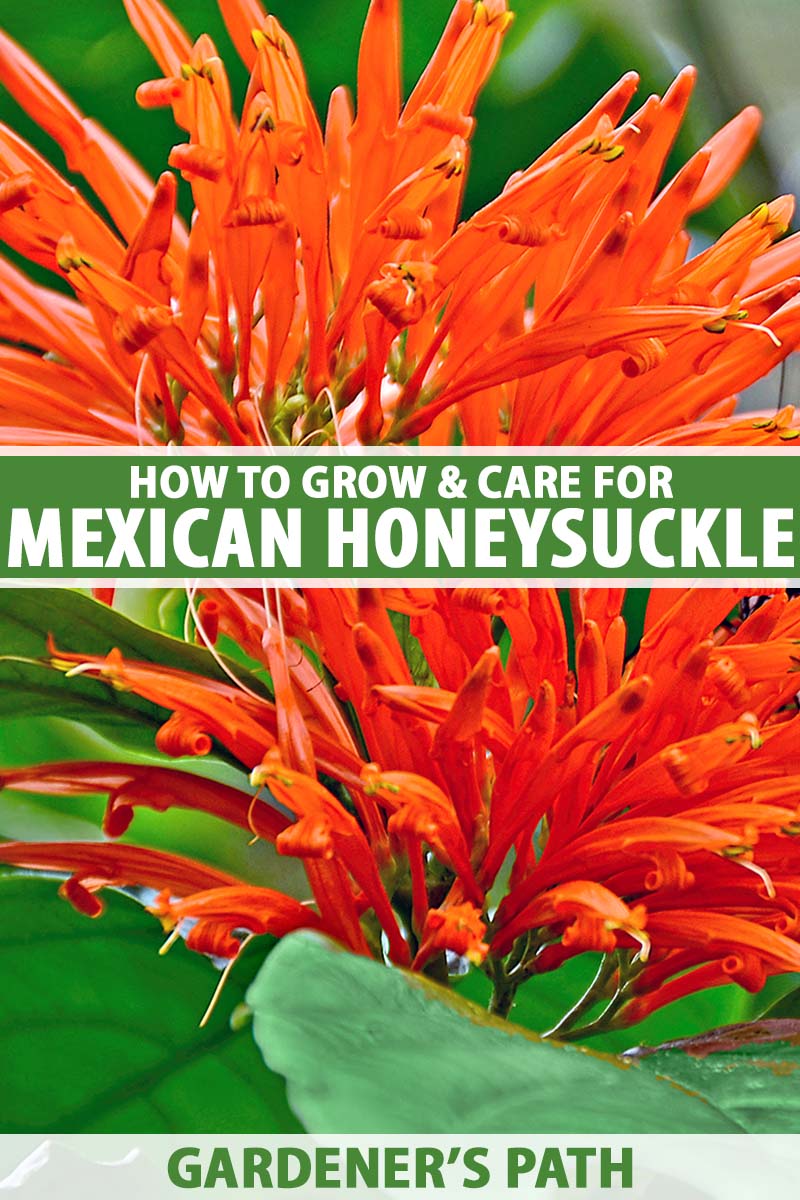
We link to vendors to help you find relevant products. If you buy from one of our links, we may earn a commission.
Mexican honeysuckle is a pollinator-friendly herb that’s known for its easy growth and maintenance.
Not only is this perennial aesthetically pleasing, but it also has a variety of medicinal uses.
Its leaves can be used to treat respiratory issues, such as coughs and asthma, and it also has antibacterial properties.
Another fascinating thing about Mexican honeysuckle is that its leaves can be used to create a unique infusion that can take on various colors depending on the pH of the plant and the water.
I couldn’t wait to try it out and show my natural dyer friends – and you!
As soon as I learned more about the plant, I knew I had to add it to my garden. I selected a deep clay pot and placed it in partial shade where the herb is now thriving!
I feel grateful to have learned about this incredible plant through my cultural heritage, and that I can grow it in my own garden.
It’s a true testament to the power of traditional herbalism practices and the importance of preserving plants for future generations.
This guide will cover this enchanting shrub’s background and how to cultivate and care for the shrub in your garden.
Cultivation and History
This perennial shrub, belonging to the Acanthus family (Acanthaceae), is a unique and beautiful sight to behold.
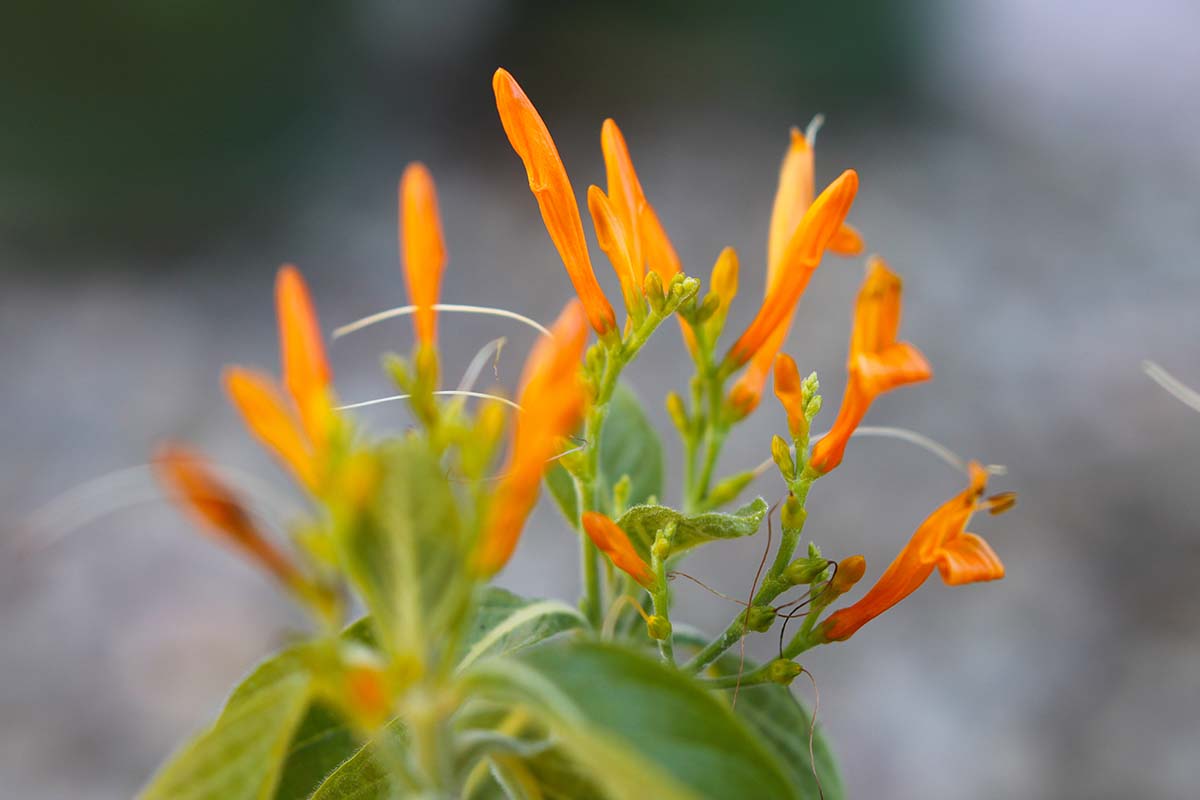
Known by various names such as firecracker bush, moyotle, moyotli, mohintli, muicle, trompetilla, and yaxan, the Mexican honeysuckle, as it is commonly known as, is native to Belize, Costa Rica, El Salvador, Guatemala, Honduras, Mexico, and Nicaragua.
The multi-stemmed evergreen is incredibly resilient and can withstand heat and droughts with ease.
However, it is not tolerant of colder temperatures and the leaves can perish, especially below 25°F.
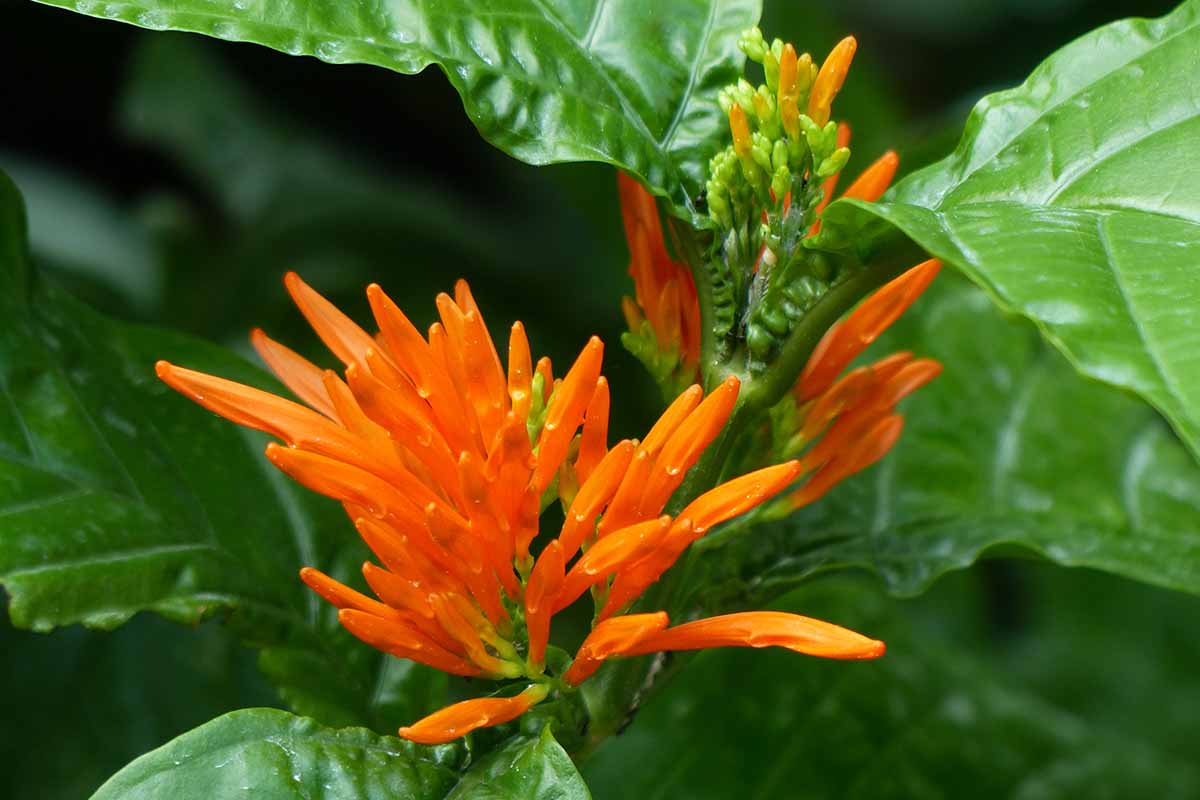
It has been known to be root-hardy and pop up in spring after the last freeze. The USDA Hardiness Zones preferred by J. spicigera range from 8 to 11.
The upright spreading growth of this plant is moderate, however, given optimal conditions it can grow faster and more substantially, even beyond its typical mature size of five feet high and six feet wide.
As the plant matures, the herbaceous stems become woody.
Clusters of bright orange, narrow, tubular flowers are hard to miss, and they attract hummingbirds, bees, and butterflies.
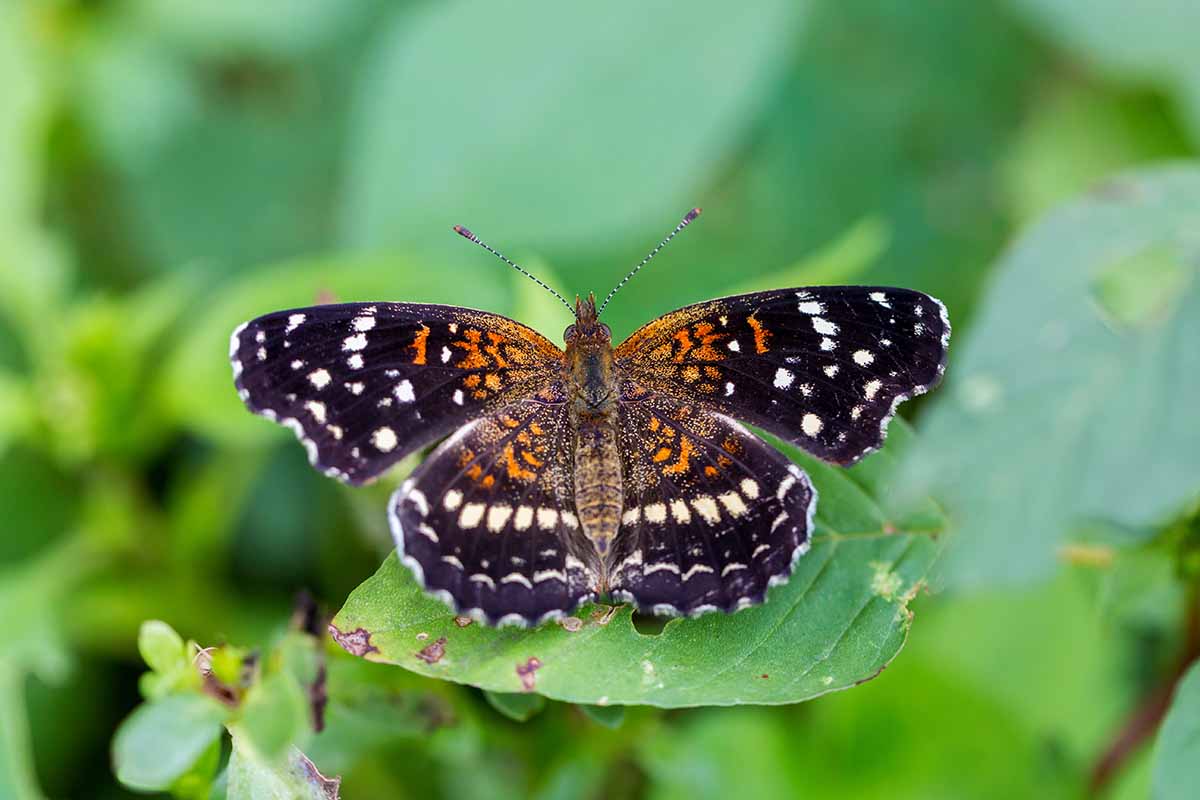
These flowers serve as caterpillar food for the Texan crescent butterfly (Anthanassa texana). The nectar-filled flowers can bloom throughout the year in certain regions.
And the soft-to-the-touch, light green, ovate, oppositely arranged leaves grow up to three inches long.
By adding the leaves to hot water, it can be used as a natural pigment to color various items such as foods, beverages, and natural fibers.
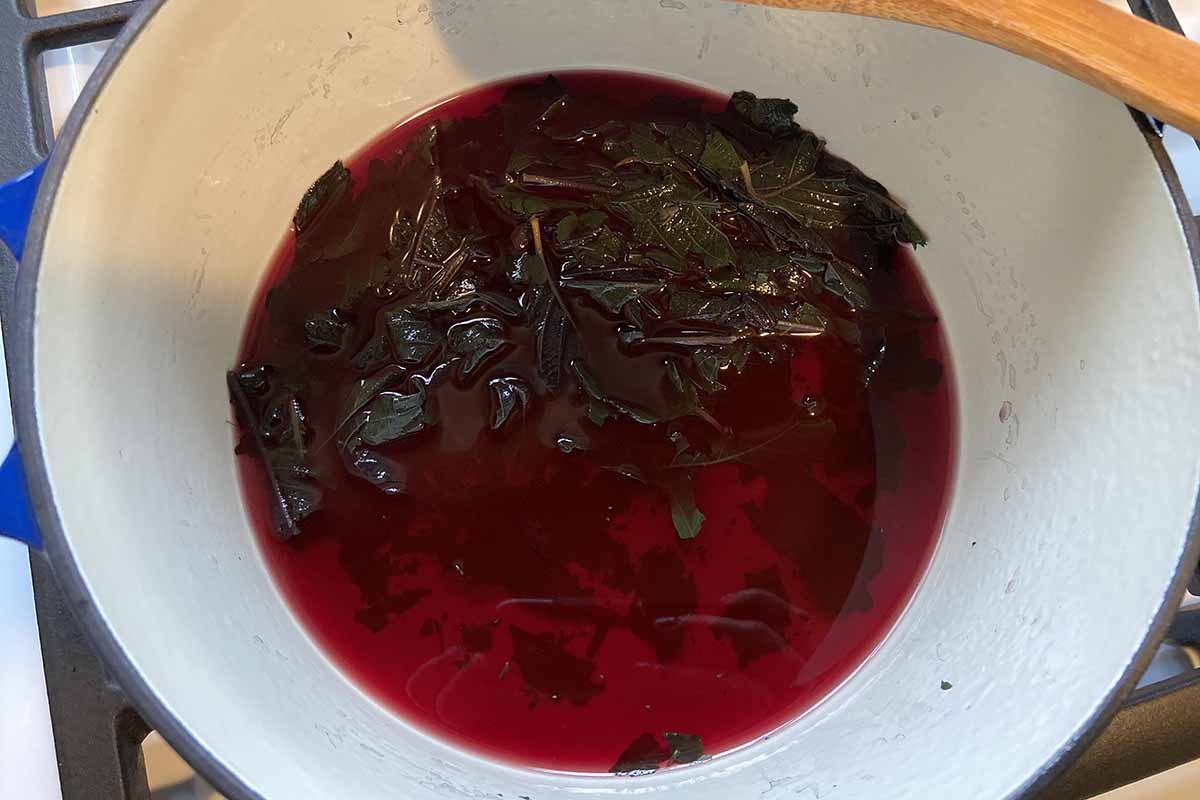
The use of J. spicigera as a pigment is truly remarkable and goes back many generations; its potential use is inspiring.
According to a recent research published in the journal “Food Chemistry: Molecular Sciences,” J. spicigera pigments could be used in various food systems due to their range of colors at different pH levels.
Due to fluctuations in the molecular structure of anthocyanins in the extract, the color of J. spicigera extracts or powders in solution may turn orange, red, purple, or blue, ranging from a low to high pH.
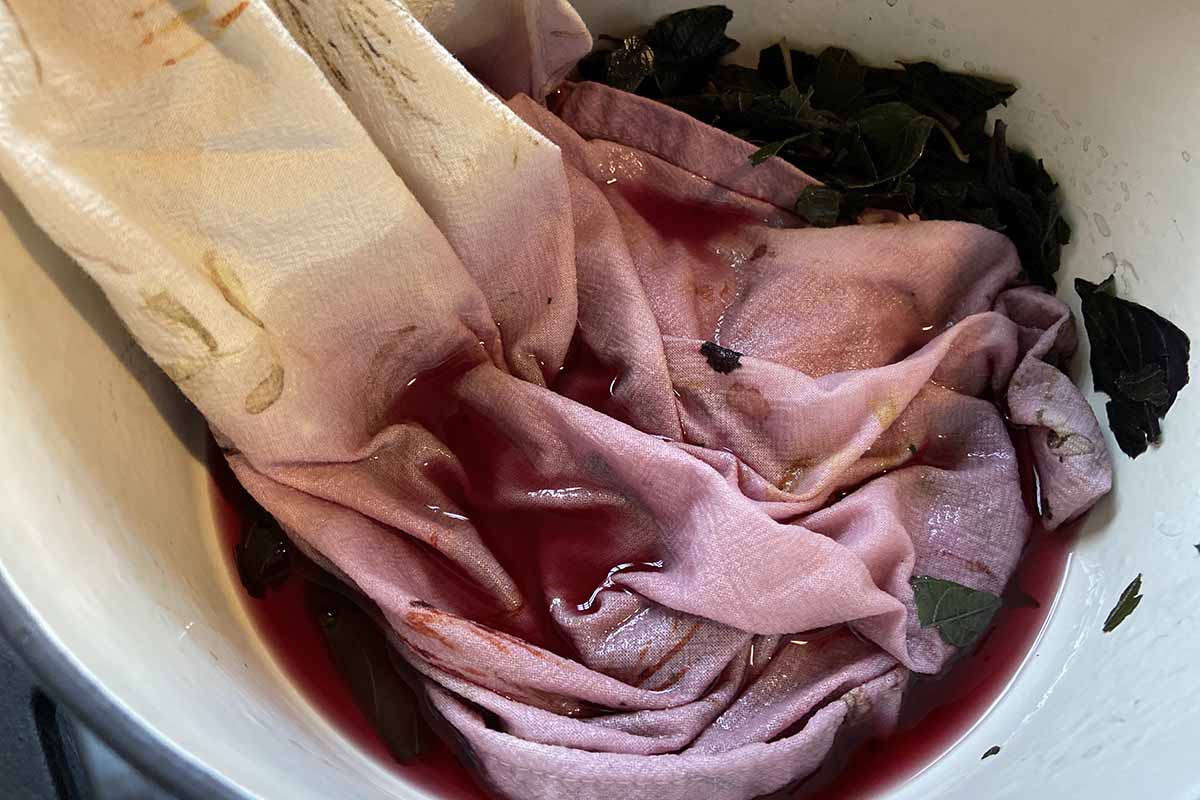
Mexican honeysuckle has also been used traditionally for generations in Mexico to aid in the treatment of various ailments such as dysentery, diabetes, leukemia, anemia, and more.
I think Mexican honeysuckle is a beautiful reminder of the many natural wonders of our planet and the power of resilience.
It can serve as an inspiration to us all to stay strong and persevere through any challenges that come our way.
Propagation
The propagation of this species from seed is not commonly practiced.
Rather, stem cuttings are often the preferred option for propagating Mexican honeysuckle. Potted shrubs can also be transplanted into the garden.
From Cuttings
It’s best to take softwood cuttings during the summer months and hardwood cuttings during the fall.
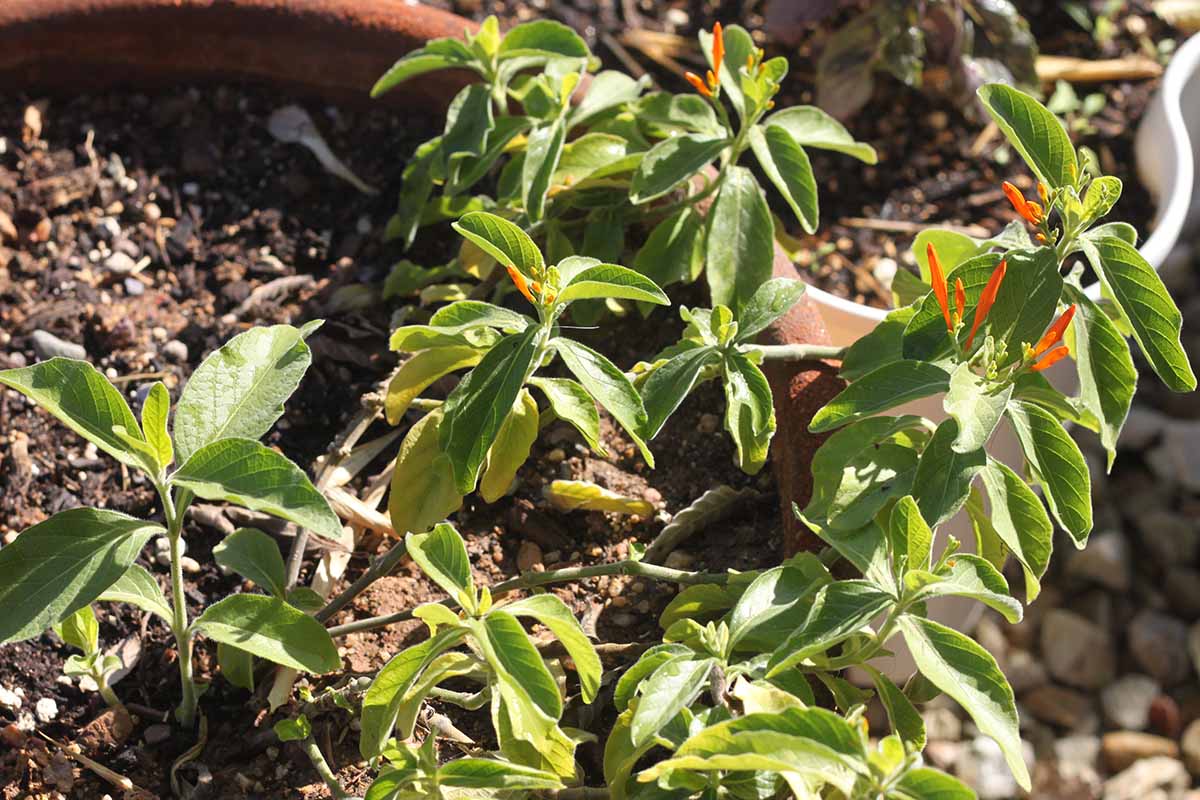
To begin the propagation process, start by filling a pot with potting soil and moistening it with water.
Take a stem cutting that is approximately four inches long and dip it in water. At this point you can apply rooting hormone to the base before planting it in the soil to increase the possibility of root growth.
Place the cutting in the soil. Cover it with a plastic bag to encourage rooting, and maintain soil moisture until new growth emerges.
From Transplants
Once your cutting has established plenty of growth, it’s ready to be transplanted into the ground or to a large, deep container.
I transplanted mine from a gallon-size nursery container into a large clay container – I just wish I was able to move it around more easily!
The Viva Round Self-Watering Rolling Planter with a 17.25-inch diameter from Gardener’s Supply Co. would be perfect.
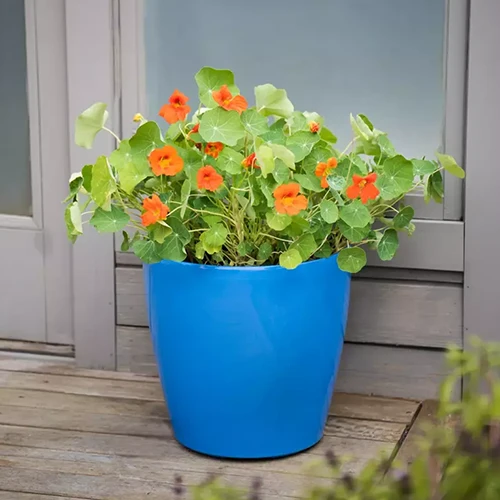
Viva Round Self-Watering Rolling Planter
First, prepare the soil by mixing in some compost and make sure it is moist enough.
Then, dig small holes about three to four feet apart if planting more than one, and place your transplants in them. Make sure to cover the roots with soil and gently pat it down.
Next, water the plants thoroughly by saturating the soil while being sure not to waterlog it.
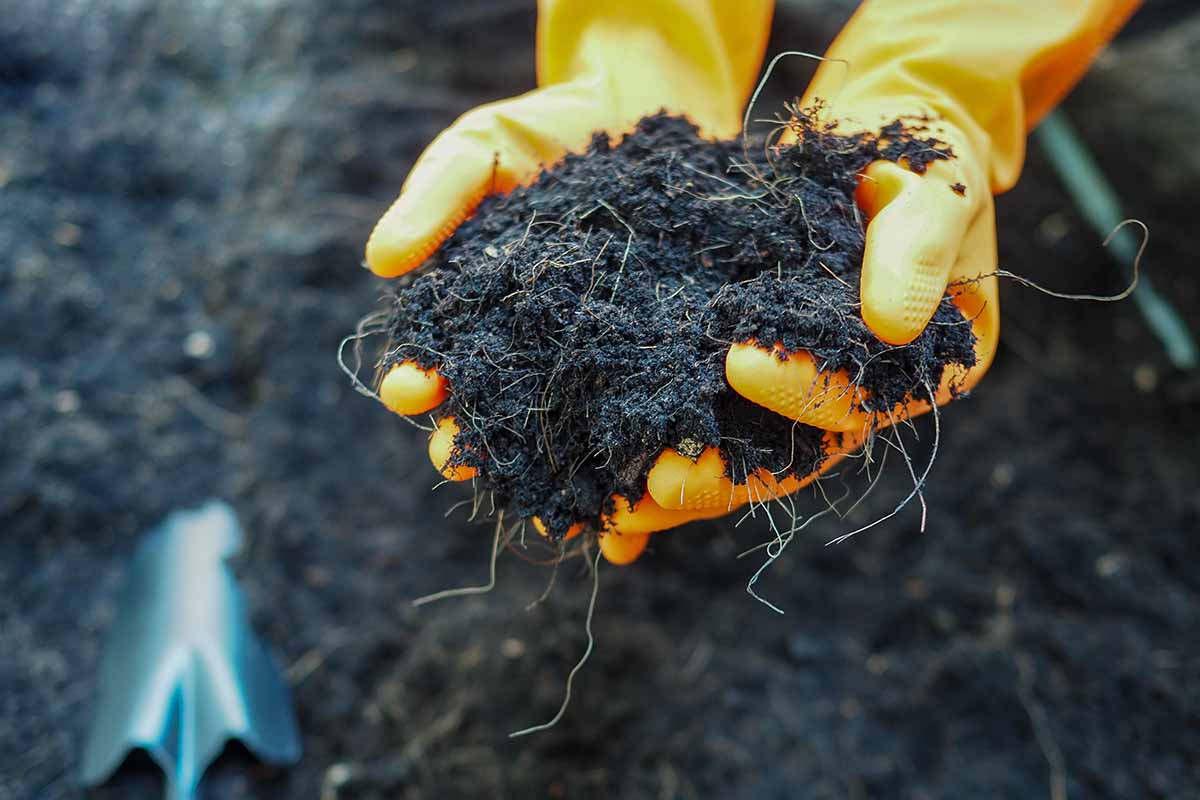
Over the next few weeks, observe your Mexican honeysuckles’ growth.
As they establish themselves, make sure to keep weeds to a minimum as they can take water and nutrients away from your new plants.
With a little bit of care and attention, anyone can grow this species, from cuttings to shrubs, in their own backyard!
How to Grow
This gorgeous perennial is a true sun-seeker that can also handle a little bit of shade. But be warned: if you keep it in the shadows, it may not flower as much, and it can get a bit leggy.
To keep this plant happy, make sure it’s planted in well-drained soil that’s neutral to alkaline.
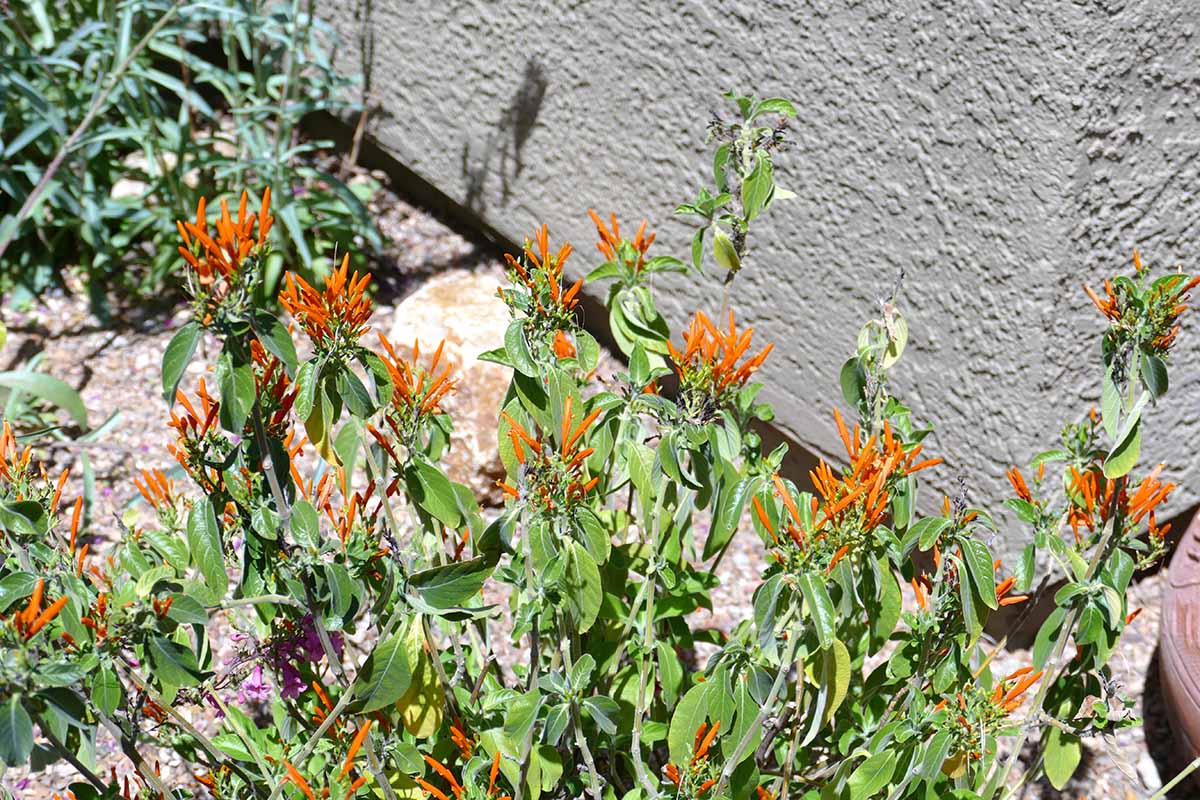
No need to fertilize, but if you must, do it once a year in late winter after your last frost. This will help it to thrive for longer, particularly if you’re growing it in a container.
Over time, the plant’s container soil can lose important nutrients from water run-off, so a little boost can be beneficial and go a long way.
To ensure the development of a healthy root system, I recommend watering about once a week or every other week. Once the plant is established, it can survive drought-like conditions, but it will appear more vibrant with regular monthly watering.
It’s important to note that overwatering can hinder the plant’s ability to bloom, so it’s best to avoid excessive watering.
If you live in an area that gets chilly in the winter, don’t worry! Applying mulch will help to protect the crown so the plant returns in the spring.
Once the last freeze is over, trim off any frost-damaged parts to support new growth.
Growing Tips
- Grow in full sun to partial shade.
- For robust growth and more flowers, water regularly and grow in full sun.
- Apply mulch prior to frost to help the plant return in spring.
Pruning and Maintenance
This shrub responds quickly to pruning with new growth.
It’s best to lightly head back the plant during late winter. If it’s still flowering at that time, be sure to leave a few flowers when pruning for the pollinators to enjoy during a time when nectar sources are not as abundant.
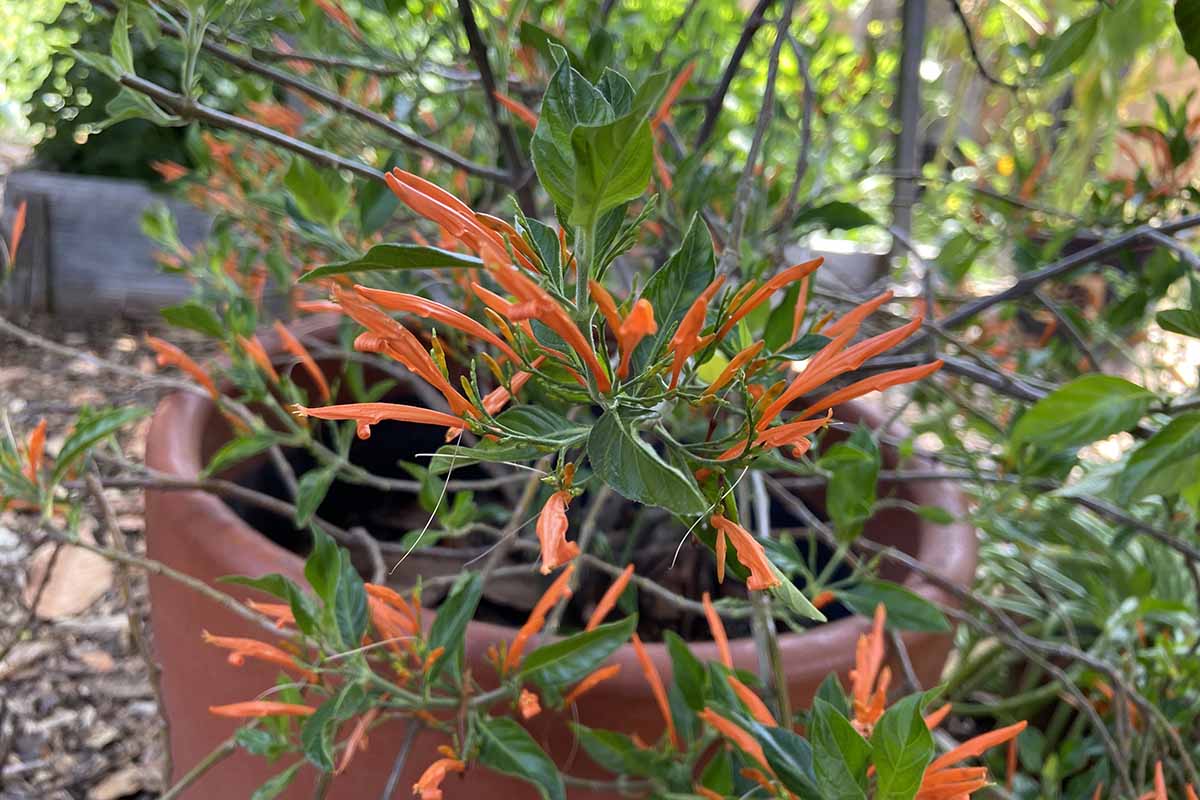
Seasonal pruning will help it to stay full of leaves while encouraging more flowers.
I’m often asked which pollinator plants are tidy and leave very little leaf litter behind, and I can say that Mexican honeysuckle is an excellent candidate for spaces that require a bit more neatness!
Where to Buy
It’s not every day that one comes across Mexican honeysuckle being sold at a nearby nursery.
However, if you’re in search of this pretty perennial, then your best bet may be to pay a visit to a nursery that specializes in rare or pollinator-friendly species, or a local plant swap.
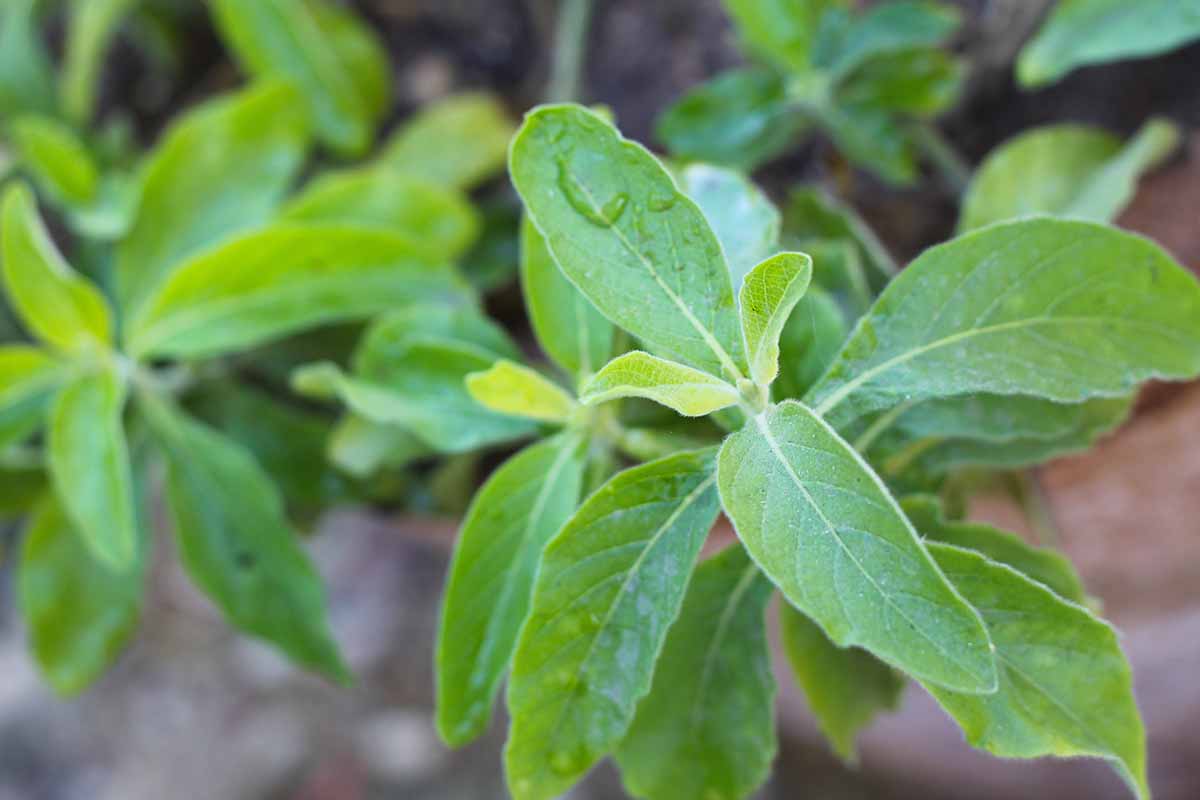
For those residing in East Los Angeles, like me, you’ll be pleased to know that you can easily find this herb displayed in gallon-sized pots outside of Mexican markets, also known as mercados.
Managing Pests and Disease
There aren’t many pests or diseases that affect this shrub. However, it is important to take note of the potential threats that may affect the growth and well-being of J. spicigera.
By taking simple and necessary precautions and ensuring proper care, you can help maintain the plant’s health and vitality.
Insects
It’s important to keep an eye out for whiteflies (Aleyrodidae), which can infest and cause damage to the foliage, flowers, and stems.
As a longtime California gardener, I have noticed that whiteflies are a common pest in warm climates.
These tiny insects, both adults and nymphs, feed on plant juices, which can weaken the specimen over time.
Additionally, they excrete a sticky and sugary substance called honeydew, which can attract a fungus known as sooty mold.
Fortunately, there are organic methods available to control whiteflies. Keeping up with and removing infested leaves can be an effective method in helping to prevent further spread, to start.
Another organic approach is to attract natural predators like native parasitic wasps and predatory beetles.
These beneficial insects can help to balance out the population of whiteflies and prevent further damage to plants.
Lastly, applying a pollinator-friendly organic solution like Organocide® Bee Safe 3-in-1 Garden Spray, which is available from Arbico Organics, can also effectively control whiteflies.
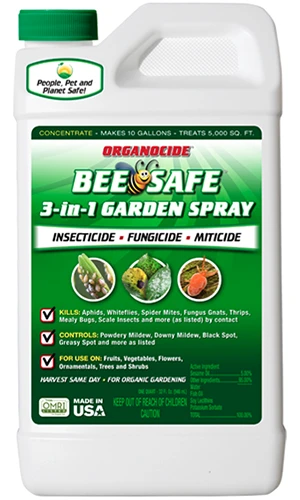
Organocide® Bee Safe 3-in-1 Garden Spray
This natural insecticide can be sprayed to control these pests, to prevent feeding and laying eggs.
Overall, by employing a combination of these methods, gardeners can effectively manage whiteflies and protect their plants from damage.
Learn more about how to deal with a whitefly infestation in our guide.
Disease
Root rot is the primary disease to look out for with this resilient plant.
We know Mexican honeysuckle does not enjoy waterlogged soil and prefers proper soil drainage, and we may be met with this harmful ailment if we don’t provide these conditions.
If your plants are experiencing wilting or yellowing leaves, it may be due to an issue with rot.
Upon inspection of the roots, if you notice black or brown tips and mushy areas, then it is likely that root rot is the culprit.
This disease can impact both young and mature specimens, so it is crucial to take preventative measures.
You can reduce the likelihood of root rot by practicing proper cultural methods of plant care, such as avoiding overwatering and ensuring adequate soil drainage.
When watering, make sure to direct the water away from the plant’s crown. Additionally, incorporating compost into your soil can help prevent this disease by improving soil quality.
Best Uses
J. spicigera grows well in sunny pockets of the garden, bringing bursts of bright color to spaces with its flowers, whether in the ground or in a container.
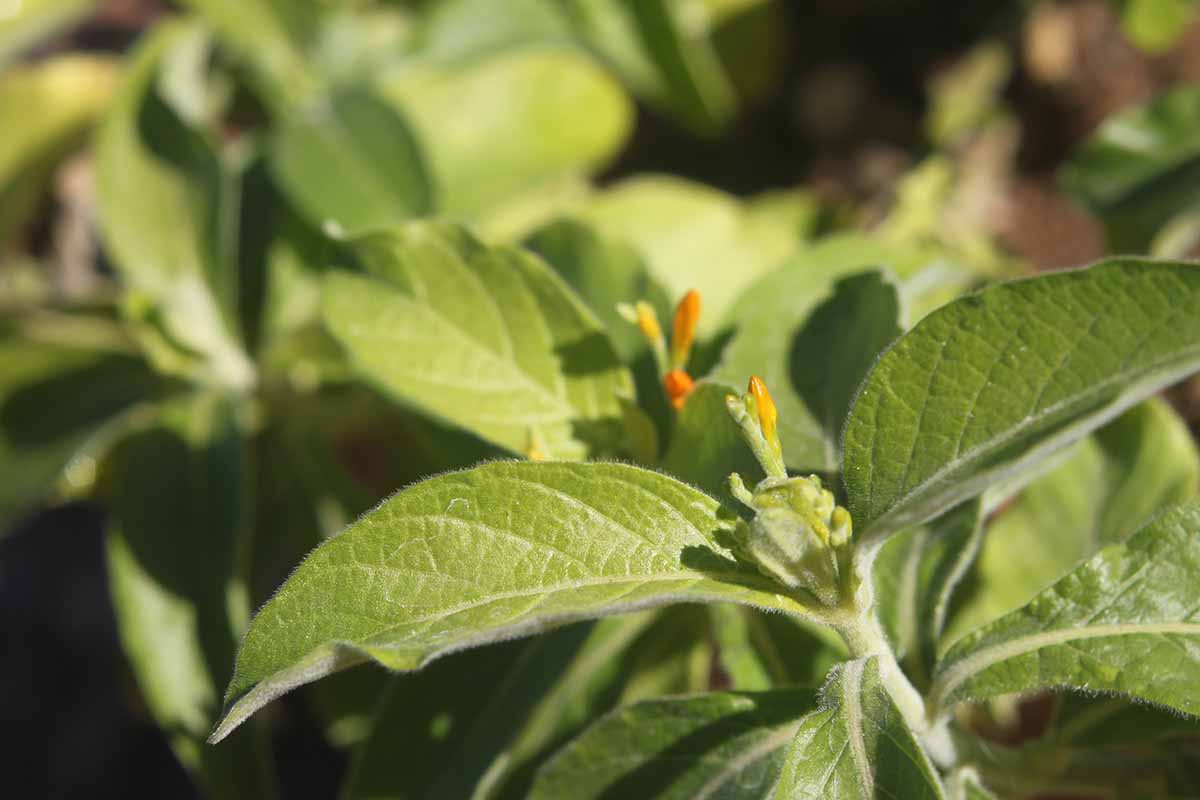
It’s an ideal shrub to include in pollinator gardens, especially for hummingbirds!
The plant also offers an array of potential healing benefits and botanical dyeing possibilities, making it a perfect selection for those interested in herbal remedies and natural pigments.
Quick Reference Growing Guide
| Plant Type: | Perennial evergreen shrub | Flower/Foliage Color: | Orange-red/green |
| Native to: | Belize, Costa Rica, El Salvador, Guatemala, Honduras, Mexico, Nicaragua | Maintenance: | Low |
| Hardiness (USDA Zones): | 8-11 | Tolerance: | Deer, drought |
| Bloom Time/Season: | Spring-fall | Soil Type: | Various |
| Exposure: | Full sun to partial shade | Soil pH: | 6.6-8.5 |
| Time to Maturity: | 2-3 years | Soil Drainage: | Well-draining |
| Spacing: | 3-4 feet | Attracts: | Bees, butterflies, hummingbirds |
| Planting Depth: | Depth of root ball (transplants) | Uses: | Herb garden, natural dyeing, pollinator garden |
| Height: | 5 feet | Order: | Lamiales |
| Spread: | 6 feet | Family: | Acanthaceae |
| Water Needs: | Low-moderate | Genus: | Justicia |
| Common Pests and Diseases: | Whiteflies; root rot | Species: | Spicigera |
Frequent Fiery Flowers for Your Garden
Mexican honeysuckle is a beautiful and beneficial perennial that has many uses. It is not only a powerful healing herb, but it can also be used as a natural dye for different projects.

Additionally, it is an attractive shrub that supports pollinators and can withstand drought conditions, making it ideal for eco-friendly garden designs.
If you found this guide helpful, I recommend checking out our other guides on cultivating pollinator-friendly landscapes, starting with these:

